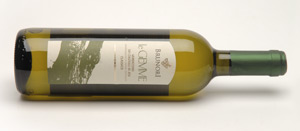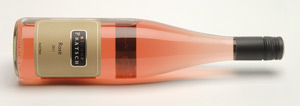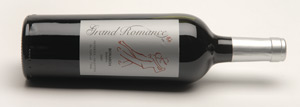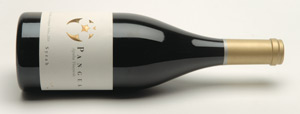
Written by Zachary Mannheimer
[dropcap]W[/dropcap]hen I moved to Des Moines five years ago, the selection of varietals on restaurant menus and shelves largely consisted of what I like to call the “nine we know”—cabernet sauvignon, merlot, syrah, zinfandel, pinot noir, chardonnay, sauvignon blanc, riesling and pinot grigio. Malbec was the new grape craze, and sometimes you could find a primitivo stuffed behind several dusty bottles of Chianti. But something has happened recently. We are beginning to find ourselves in the middle of a wine scene. Although other cities already have experienced such a transformation, Des Moines’ move toward the esoteric has happened more swiftly and with more attention to detail.
I credit Gateway Market for much of the change. Gateway gave residents the chance to experiment with foods and grapes previously unavailable here. Then came new restaurants—Alba, Sbrocco, Baru 66, Proof, Café di Scala, Americana Restaurant & Lounge—all helping to push the envelope of what we now expect the culinary world of
Des Moines to be. Next came AllSpice and The Cheese Shop of Des Moines and now Vom Fass. Not to mention al fresco dinners, Winefest Des Moines, the World Food Festival and dsm’s Top Chef competition. All of this has helped create a vibrant scene of new experiences and establish Des Moines as a culinary destination.
The world’s wine distributors and importers have noticed. Grapes like listán negro, gros manseng and schiava have arrived. And as I always say, a city with gros manseng is a city I can live in. (I don’t think I’ve actually ever said that, but you get the idea.) Be proud of yourselves, Des Moines diners and drinkers. These grapes are here only because distributors, retailers and restaurants think they can sell. What’s more, they’re wallet-friendly: The more esoteric the grape, the less expensive the price.
Here are five bottles I’m drinking this summer that weren’t available in Des Moines just a few years ago. Find them at Gateway Market or Ingersoll Wine and Spirits.
 1. Verdicchio
1. Verdicchio
This time of year, basil is growing everywhere, and I’m always looking for a nice pesto. My favorite grape to go with a nutty pesto is verdicchio, hailing from the Marches region of central Italy. Verdicchio comes from two subregions of Marches, Jesi and Metelica. Jesi is closer to the Adriatic Sea and is my favorite of the two, producing mouthwatering yellow fruits with hints of salinity—perfect to soak up that nutty, grassy pesto. Brunori produces a fabulous 100 percent verdicchio called Le Gemme, featuring honeydew, pear and bright citrus immediately on the nose, forming into a cashew-like aftertaste. It’s like someone took a Spanish albariño and blended it with a Napa chardonnay.
And it’s only $17.
 2. Tinta Roriz and Touriga Nacional
2. Tinta Roriz and Touriga Nacional
Portugal’s House of Noval is well known for its port, some of the finest vintages I have ever enjoyed. Recently its nonfortified wines have been popping up, and there is a smoky and luscious bottle found on some shelves in Des Moines. Portugal’s Douro Valley grows spectacular tinta roriz and touriga nacional, two of the five principal port grapes, and they are at their finest expression in Noval’s Cedro, as the grapes get to show their true expression free from fortification. Loganberry, chocolate, dried meat and Kalamata olives, four things you would expect not to work together, instead blend expertly into a red pepper bite, reminiscent of chili peppers in unsweetened chocolate.
At $23, this is a bottle not to pass up.
 3. Zweigelt
3. Zweigelt
Summertime. Rosé. Nothing better. One of my favorites that wasn’t anywhere near Des Moines a few years ago is Austrian Zweigelt, named for its developer, Fritz Zweigelt. Recalling a rustic Oregon pinot noir, this is a grape I believe could be cultivated well in Iowa due to the state’s climatic similarity to Oregon. Biohof Pratsch makes a delicious little number with its zingy rosé of Zweigelt. Wild flavors of strawberry, plum and apricot fly from the bottle followed by mild carbonation, lending a bit of sparkle to your summer pairing. A long finish finds a slight lemon mouth feel that is both refreshing and satiating. This guy pairs perfectly with fresh fruit but can also stand up to cured meats as there is some salinity present.
An amazing value at $13.
 4. Bonarda
4. Bonarda
Bonarda is a grape I often write about, but it doesn’t seem to be catching on yet. An alternative to malbec, bonarda hails from Argentina. There are several reasons bonarda is here, but I credit Des Moines’ own Brian Kinsella for sourcing his own grapes and making his own blend he calls Romance. A feminine title but a muscular flavor, the wine bursts with cocoa powder, cinnamon and clove. A peppery back palate is unexpected in the medium body. I find this bonarda holds up quite well with dense fish like swordfish and tuna. It also can be a strange and transcendent pairing with sushi.
$15 buys you this baby.
 5. Syrah
5. Syrah
When I want to splurge on a bottle in Des Moines, I don’t look for the Joseph Phelpses or Caymuses of the world, as they are certainly not difficult to find. Instead I seek out a giant New World sucker punch of a wine from the mountains surrounding Chile’s Colchagua valley. I know I said syrah is commonplace these days, but you’ve never had a syrah quite like Pangea. Blending espresso notes, raspberry, vanilla bean and cumin is no easy task—and Pangea makes a powerhouse, 100 percent syrah smack-you-in-the-face and light-a-cigar bottle. This guy needs a porterhouse to make it through the night. So when you’re looking to spend that $150 on Insignia, save $100 for the steak, fire up your barbecue and crack open Pangea.
It’s life-altering; I guarantee it. $50.



